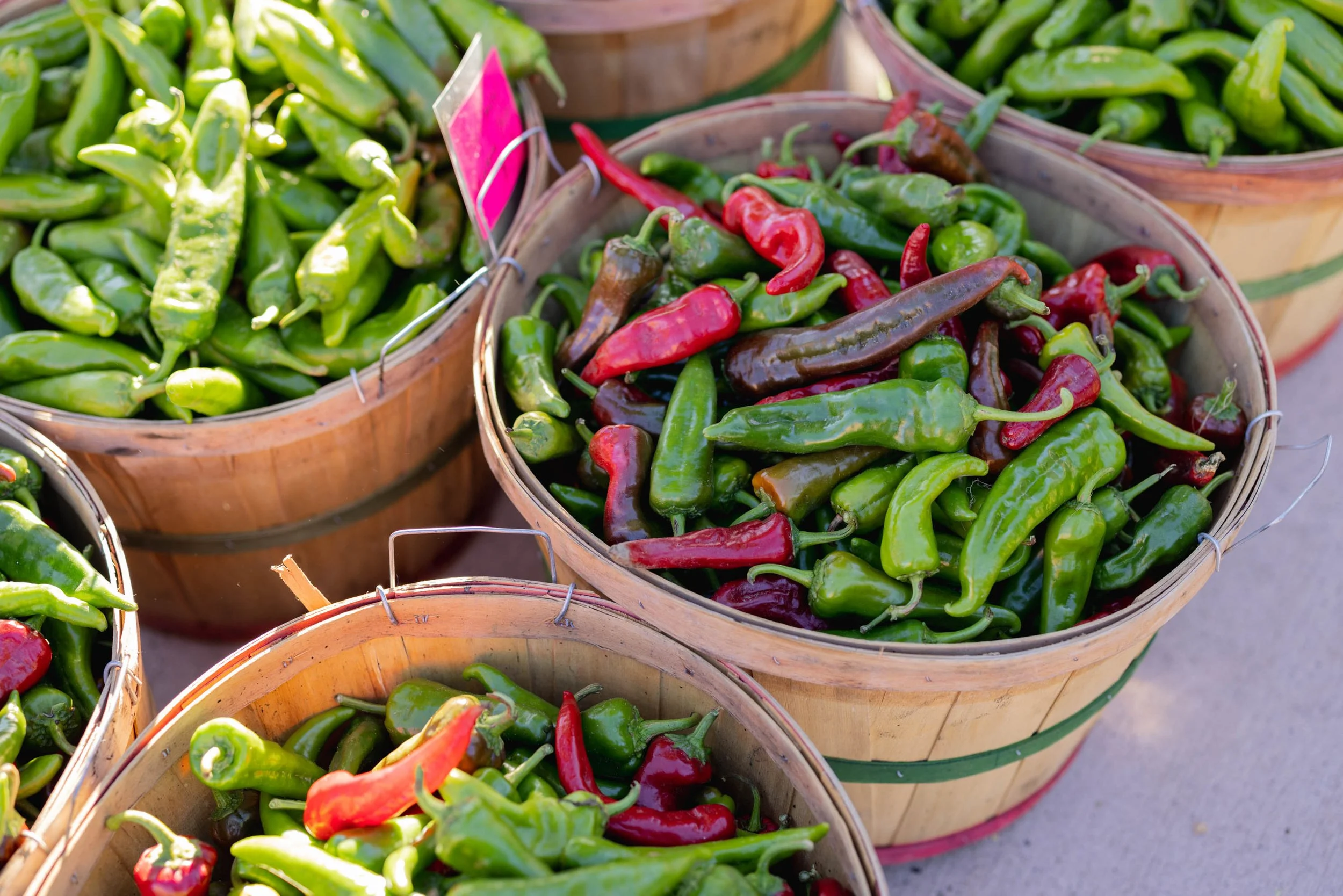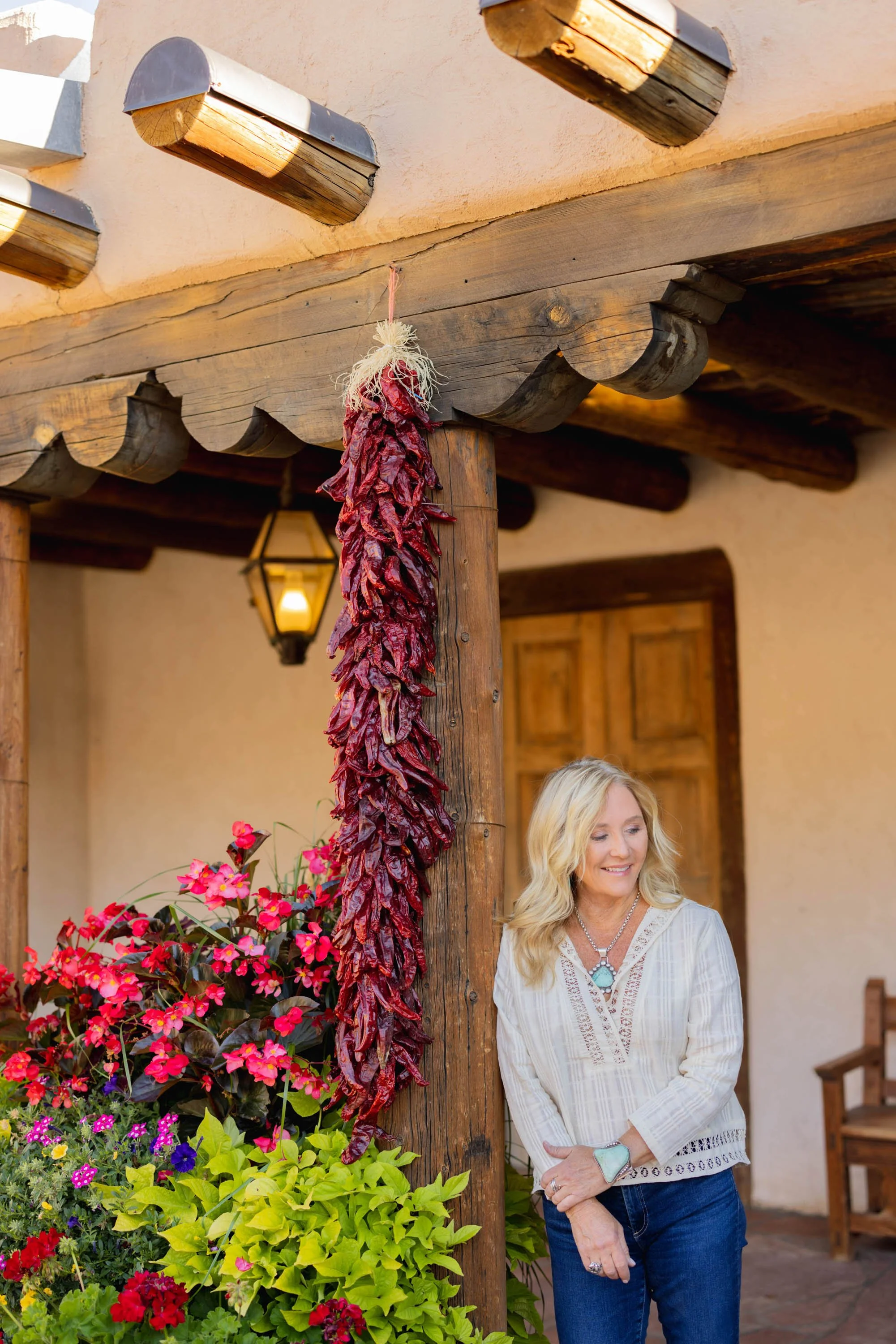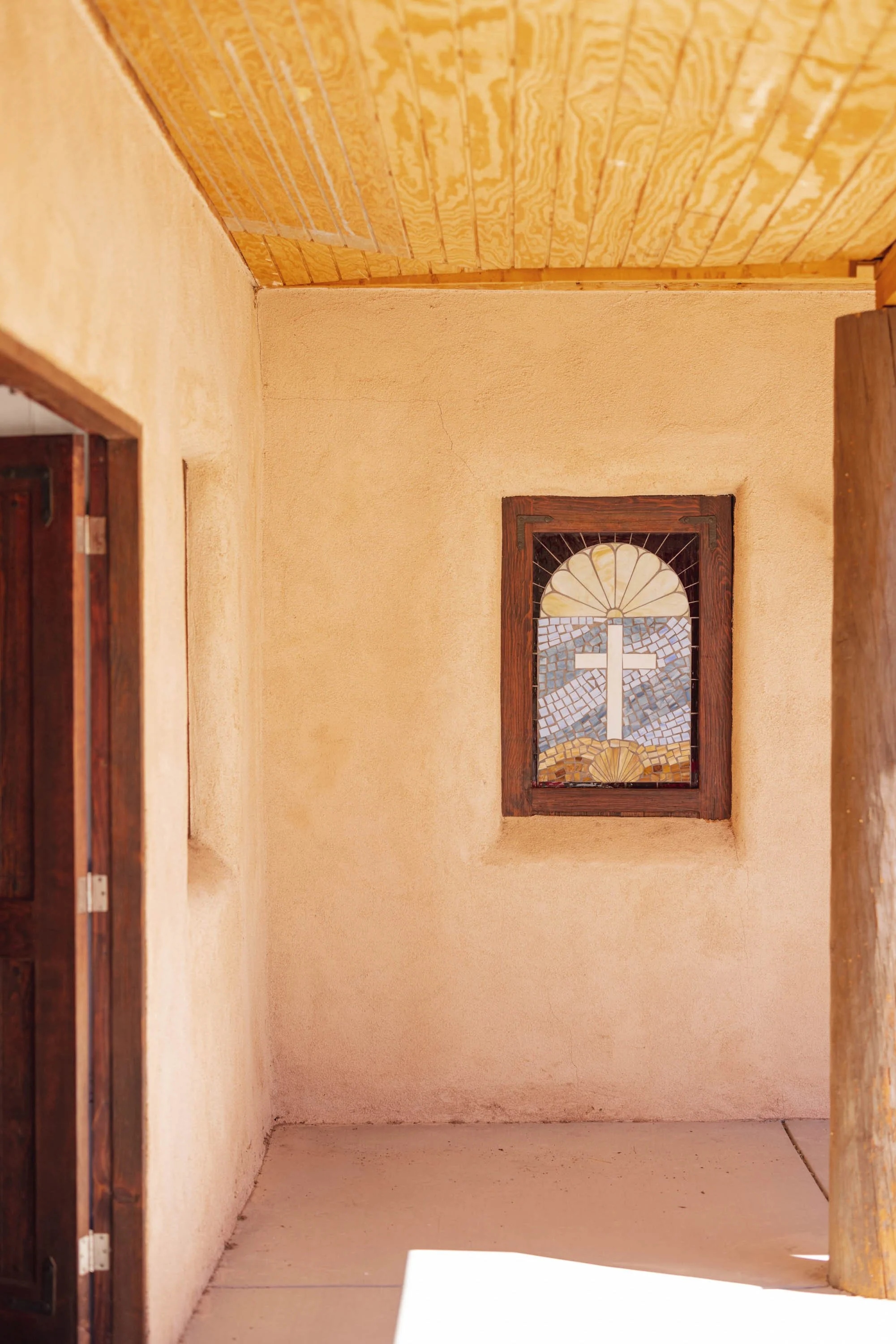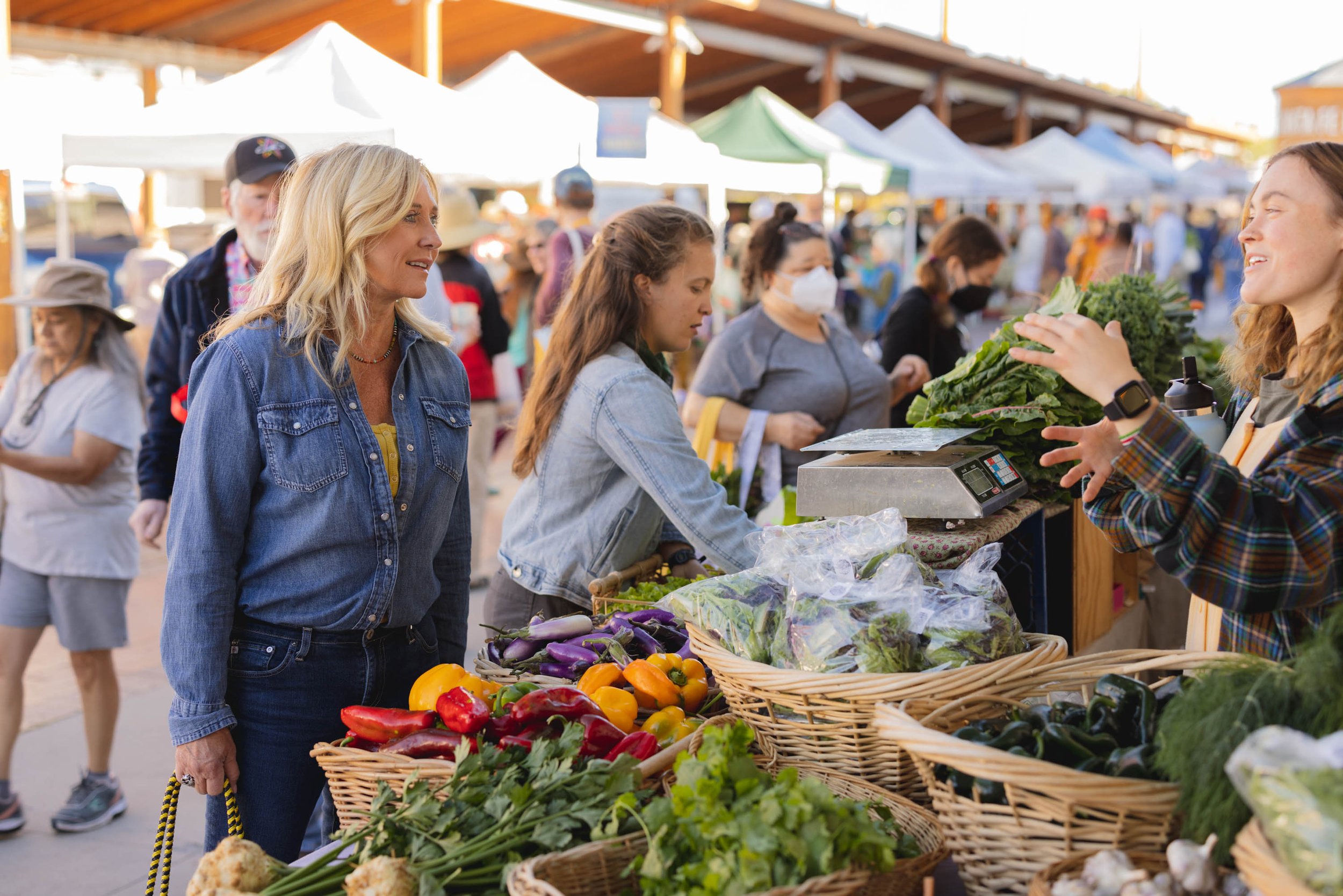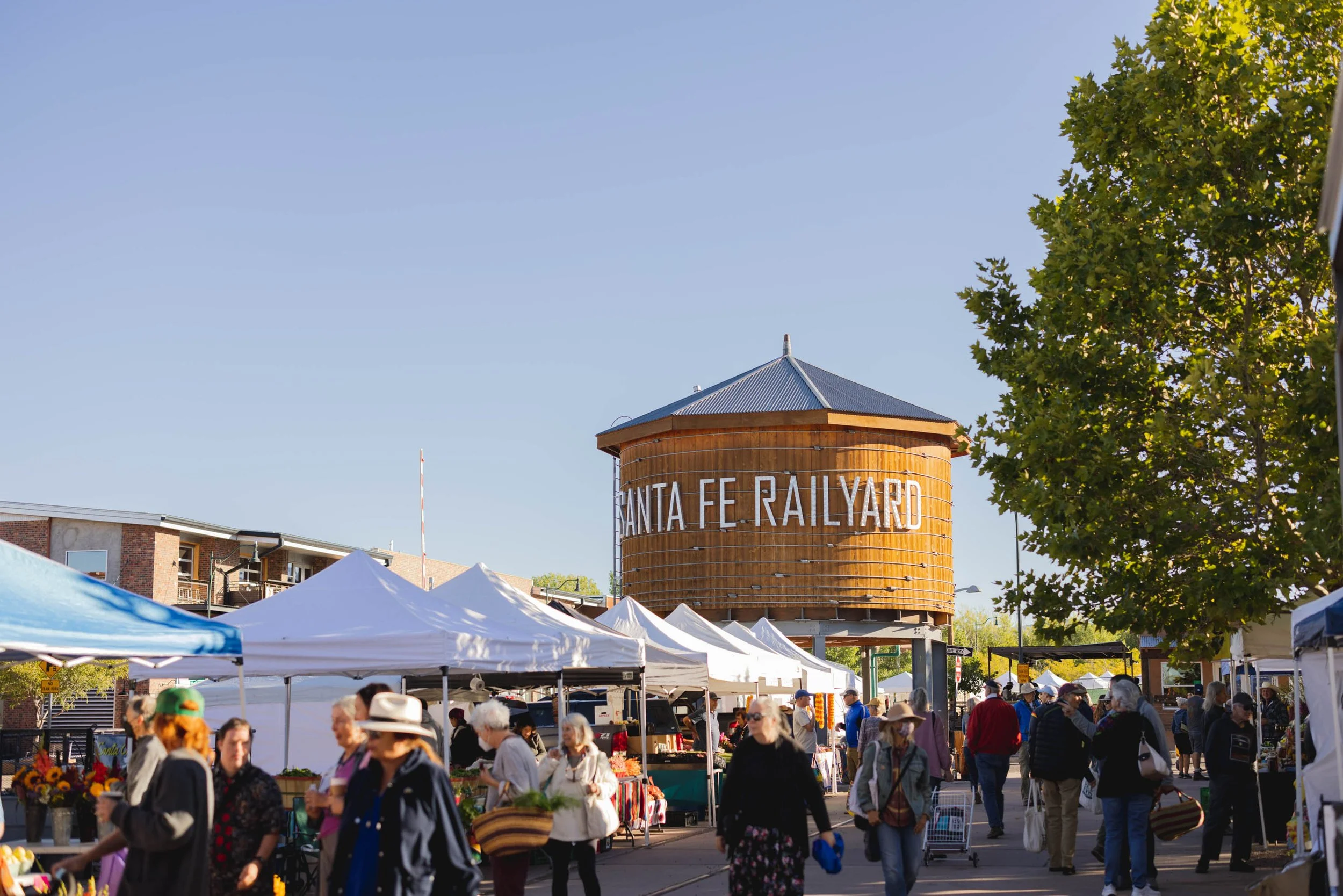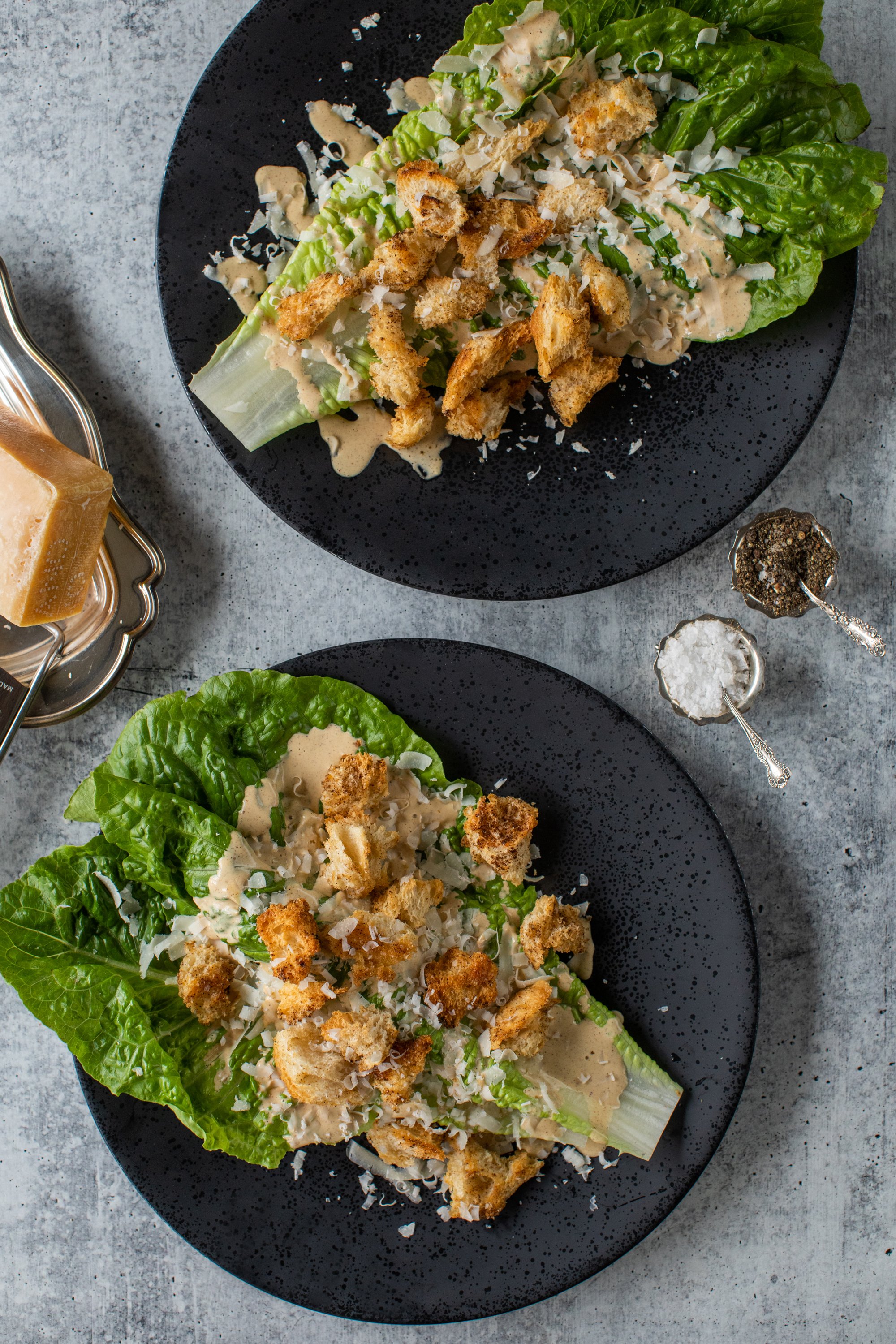Santa Fe: From Chile Ristras to Holy Dirt
Since childhood, once a year my family loaded up our car in Oklahoma and drove 8 hours to the southern New Mexican town of Hobbs where my grandparents lived. My mother grew up in Hobbs, which I recall being flat desert land with lots of oil rigs, and an abundance of cactus. My grandparents had moved their family to Hobbs in the 1950s when my mother and her 3 siblings were children so my grandfather, Pappaw, could work in the oil business.
My grandmother, Neena, was an artist and quite famous throughout New Mexico. Their home was very colorful with brightly painted furniture and pillows covered in hand-painted fabrics. The walls were covered with Neena’s paintings which my Pappaw framed in his workshop. She often traveled north to Santa Fe where she took art classes and was inspired to paint landscapes of the American southwest. Adobe houses and desert flowers painted in acrylic and watercolor were some of my favorites of her collection. There were images of adobe houses where colorful bundles of red chiles hung on the front doors and rafters, adding a splash of color to the earthen structures. In my grandparent’s house I would often lay on the sofa and gaze at her paintings, wondering if I would ever see those adobe homes with chiles on the porches.
It wasn’t until I was in college that I first traveled to Santa Fe to snow ski with my family. I was not only fascinated with the mountain landscapes and desert terrain, but also the architectural style which is unique to any other city in the United States. Most structures are made from adobe bricks, with colors in earth tones ranging from light tan to terra cotta clay. I saw many red chile bundles, which I learned were called ristras. I also learned that chile ristras are not only meant for decoration, but more importantly they’re used to season the unique cuisine Santa Fe is known for.
I began traveling back to Santa Fe every year, not only to snow ski, but to enjoy the many other things the city has to offer. I began taking cooking classes at the Santa Fe Cooking School in the 1990’s and have taken at least a dozen more classes since. It was there that I learned the historical significance of New Mexican cuisine. The indigenous people, including the Navajo, Apache, and Pueblo tribes harvested essential ingredients to their diet like chiles, corn, squash, and beans. In the 16th century, the Spaniards introduced wheat, beef, pork, and spices. It is likely that they taught the tribes how to use dried chiles to make sauces and marinades. In the 19th century the Mexicans arrived, bringing with them tomatoes and cilantro. But what makes Santa Fe cuisine so unique from those other cultures is the use of both green and red chiles.
Although red and green chiles yield their own unique flavors, they often come from the same plant. When slightly unripe, farmers pick the green chiles for a grassy and vegetal essence with varying heat. Cooks then fire-roast them to add to sauces, soups, and enchiladas, or stuff them with cheese and shredded meat. On the other hand, farmers gather most of the ripe, red chiles to dry them in the hot New Mexican sun. They’re ground into powder for rubs or blended into sauces for tortillas, stews, or—really—anything needing a punch.
In most Santa Fe restaurants, when you order food you’ll be asked for your chile sauce preference in the question of “red, green, or Christmas”. I always order Christmas (both red and green), and I’m never disappointed. Whether it’s enchiladas, chilaquiles, or a breakfast omelet, I like to experience as much chile love as I can.
One of my favorite times of the year to visit Santa Fe is in late summer/fall when it’s chile harvest season and you can smell the aroma of chiles in the air. The Santa Fe Farmers Market is open every Saturday, and during chile season the sidewalks are lined with baskets of chiles where mesh tumblers twirl them over flames to release their smoky goodness. For over 20 years, my friend Matt Romero has been farming chiles and selling them at the market. He once told me, “Green chile is why you move here, red chile is why you stay.” As a former chef, he retired from the kitchen and planted his roots in the New Mexican dirt with a tin can of chile seeds his uncle gifted him. You can spot his huge smile and bubbly personality nearly every weekend during chile season as he draws crowds to his spinning chile roaster.
Twenty minutes north of Santa Fe is the small community of Chimayo, which is known for its “holy dirt”. There’s a catholic church that was built in the early 1800s called El Santuario de Chimayo. Pilgrims travel there every year to worship and collect the dirt that is said to have healing powers. The dirt is also known to grow some of the best red chiles in the country and that is the reason I return to Chimayo. I met Noel and Gloria Trujillo, who have farmed in Chimayo for 30 years, growing chiles, squash, and apples. Each October they harvest the red chiles and lay them in the autumn sun to dry before grinding them into the crimson powder they are famous for. And each November I collect bags of it to use in my recipes at home.
It's been 30 years since my first visit to Santa Fe, and I return at least once a year to experience the unique cuisine, architecture, history, and lifestyle. I’ve stayed at numerous hotels and resorts, and I have a few favorites like La Posada, St. Francis Hotel, and Inn at Loredo. There are some wonderful homes you can rent, as well as places outside the city center like Bishop’s Lodge. I usually fly into Albuquerque and rent a car for the one-hour drive to Santa Fe, but occasionally I’ll fly directly to the small Santa Fe airport, which is more costly.
It's difficult to name all my favorite restaurants in Santa Fe since my preferences change all the time. But a few on my list are: Sazon, Sasella, Julian’s, La Boca, Vinaigrette, Sage Bakery, and Dolina. And I always recommend a Santa Fe food tour where you walk around the square sampling all kinds of dishes representing Santa Fe cuisine. One should never miss a visit to the Santa Fe Farmers Market and Savory Spice where I stock up on New Mexican spices as well as others from around the world. And if you’re a morning walker like me, take a stroll up Canyon Road where some of the best art galleries in the world are located. There’s a wonderful breakfast spot called The Teahouse on Canyon Road that is perfect for breakfast and coffee. In the fall, The Wine and Chile Festival takes over the city, and is a good time to visit restaurants whose chefs offer wine dinners and special tastings.
New Mexico will always have a special place in my heart, especially since a big part of my family is from there. I still have many of my grandmother’s paintings and I’ll always cherish the ones that depict Santa Fe landscapes. In my travels I’ve often carried home a ristra of dried chiles, which I display in my kitchen reminding me of my childhood curiosity. I love the cuisine so much that I wrote an entire chapter about New Mexico in my cookbook, The Hidden Table. You can find many of my recipes from that chapter featured on the website. And if you have any suggestions for places to stay or restaurants to try, please let me know. I’m sure I’ll be returning to Santa Fe soon.




